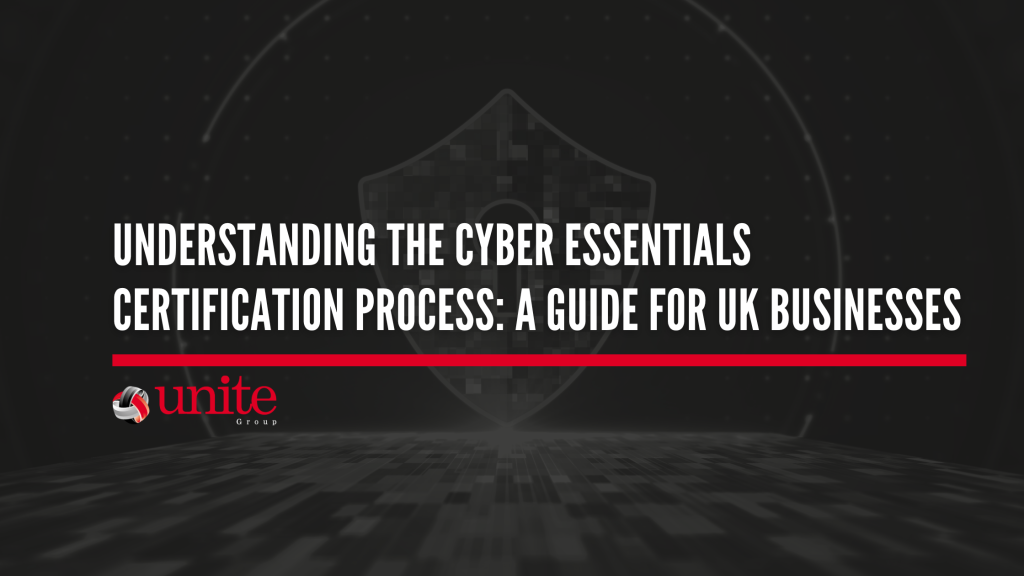
The importance of robust cyber security measures cannot be overstated. Cyber threats are ever-present and evolving, posing significant risks to businesses of all sizes. To combat these threats, the UK government introduced the Cyber Essentials scheme. This certification helps businesses protect themselves against common cyber threats and demonstrates their commitment to cyber security.
In this blog, we’ll explore the Cyber Essentials certification process, highlighting its benefits and guiding you through the steps to achieve it.
What is Cyber Essentials?
Cyber Essentials is a government-backed scheme designed to help organisations protect themselves from a wide range of cyber attacks. It focuses on five key security controls that, when implemented correctly, can prevent around 80% of cyber attacks.
These controls include:
Boundary Firewalls and Internet Gateways:
Protecting the organisation from unauthorised access from the internet.
Secure Configuration
Ensuring that systems are configured in the most secure way for the needs of the organisation.
Access Control:
Restricting access to data and services to those who need it.
Malware Protection:
Installing and maintaining effective malware protection.
Patch Management:
Keeping software and devices up to date with the latest security patches.
Benefits of Cyber Essentials Certification
Achieving Cyber Essentials certification offers numerous benefits for businesses, including:
Improved Security:
Implementing the five key controls significantly reduces the risk of cyber attacks.
Customer Confidence:
Certification demonstrates to customers and partners that you take cyber security seriously.
Business Opportunities:
Some contracts, especially with government bodies, require Cyber Essentials certification.
Compliance:
Helps in meeting regulatory requirements and industry standards.
The Cyber Essentials Certification Process
The Cyber Essentials certification process is straightforward and can be completed in a few steps. Here’s a detailed look at each stage:
1. Self-Assessment Questionnaire
The first step in the Cyber Essentials certification process is completing a self-assessment questionnaire. This questionnaire covers the five key controls and asks detailed questions about your organisation’s current cyber security measures. It’s essential to answer these questions accurately and honestly, as the certification body will use your responses to determine if your organisation meets the required standards.
2. Verification
Once you’ve completed the self-assessment questionnaire, it needs to be verified by a senior executive within your organisation. This step ensures that the information provided is accurate and has been reviewed at the highest level.
3. Submission to Certification Body
After verification, the completed questionnaire is submitted to a certification body for review. The certification body will assess your responses to determine if your organisation meets the Cyber Essentials requirements. There are several certification bodies accredited by the UK government, and you can choose one that best fits your needs.
4. External Assessment (Optional)
While the basic Cyber Essentials certification involves self-assessment, there is also an option for a more thorough review known as Cyber Essentials Plus. This involves an external assessment by a certification body, which includes vulnerability tests and an on-site audit. Cyber Essentials Plus provides a higher level of assurance and is often preferred by larger organisations or those handling sensitive data.
5. Certification
If your self-assessment or external assessment (in the case of Cyber Essentials Plus) meets the required standards, your organisation will be awarded the Cyber Essentials certification. This certification is valid for one year, after which you will need to recertify to maintain your status.
Preparing for Certification
To prepare for the Cyber Essentials certification process, it’s crucial to ensure that your organisation’s cyber security measures align with the five key controls. Here are some tips to help you get started:
Conduct a Cyber Security Audit:
Evaluate your current cyber security practices and identify areas that need improvement.
Implement Necessary Changes:
Make any necessary adjustments to your systems and processes to comply with the Cyber Essentials requirements.
Engage with IT Professionals:
Consider working with IT professionals or cyber security consultants to ensure that your organisation’s security measures are robust and effective.
Educate Your Team:
Ensure that all employees are aware of the importance of cyber security and understand their role in maintaining it.
Conclusion: The Importance of Cyber Essentials Certification
Achieving Cyber Essentials certification is a valuable step for any organisation looking to enhance its cyber security posture. The certification process not only helps protect your business from common cyber threats but also builds trust with customers and partners. By following the outlined steps and preparing thoroughly, your organisation can successfully navigate the Cyber Essentials certification process and enjoy the numerous benefits it offers. For more information and support on achieving Cyber Essentials certification, contact The Unite Group. Our team of experts is here to guide you through the process and ensure your business is secure in the digital age.
